
ORMA 60 recycling
Prince de Bretagne, or to be specific the Northern Brittany-based co-operative behind the vegetable brand, has significantly upped the ante with its sailing sponsorship. Having campaigned a Multi50 to victory in the 2010 Route du Rhum, it has since funded a new 80ft trimaran for its race winning skipper Lionel Lemonchois. This was launched in the spring. In addition, due to the Prince de Bretagne trimaran being an unusual size without much by way of completion, the co-operative set up its own race around the European coastline - the Route des Princes - in which their new steed could race.
Their Irens-Cabaret designed Princes de Bretagne Multi 50 was recently sold to Gilles Lamire and competed as Rennes - Saint-Malo Agglomeration in the Route des Princes, which was also the first competitive outing for the new 80.
When we say ‘new’, in fact this isn’t strictly accurate. The latest Prince de Bretagne is based on an existing ORMA 60, Thomas Coville’s 2002 generation VPLP design Sodebo. This has been recycled and lengthened in a similar fashion to the way Gitana 11 was (more about this here), when she was extended to 77ft and campaigned by the Baron de Rothschild’s then skipper, Yann Guichard, in the 2010 Route du Rhum.

However with Prince de Bretagne, the ORMA 60 recycling has been a little more extreme. Whereas Gitana 11 was merely lengthened, in creating the new Prince de Bretagne, the former Sodebo platform was broken up into its component parts – three hulls, two crossbeams and a semi-circular beam for the main sheet track. Unlike Gitana 11, the three hulls were discarded in their entirety and replaced with new ones, however almost all the rest of the boat has been reused. Most significantly this includes the twin crossbeams and the mainsheet beam, plus the numerous appendages – daggerboard in her mainhull, the curved lifting foils in her floats, plus three rudders - as well as her rig (new for the 2006 Route du Rhum) and much of her deck hardware.
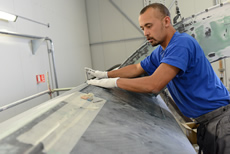 |
While the design of the three new hulls was by VPLP, who penned Sodebo in the first place, the building of them and the subsequent transformation of the Sodebo 60 into the Prince de Bretagne 80 were carried out at Chantier Multiplast in Vannes, while reinforcement work to the crossbeams was done by Lemonchois’ own Prince de Bretagne team.
The recycling process obviously placed some constraints on the design of the new boat. Fortunately Sodebo was one of the widest ORMA 60s, being virtually square (ie 18.2m wide, as well as long) and as her crossbeams were reused – along with the bulkhead structure used to attach these beams to the hulls, so her overall beam remains as it was. Similarly as her rotating wingmast and boom have been reused, the distance between the mast step and the main sheet track have had to remain the same. With the boat gaining 20ft LOA, the mast, originally stepped on Sodebo’s forward crossbeam, has moved aft on Prince de Bretagne.
In terms of her sail plan, the mainsail area remains comparable with Sodebo’s, but now has a larger foretriangle, with the chain plates moved by up to 1m forward from their equivalent position on the ORMA 60. The chainplates on her mast have also been moved and there are now locks on all the halyards with more within the boom for the reef lines. As with all of the big offshore tris built in the last decade, with no maximum length limit there is no bowsprit – the tack of the big downwind sails is now attached to the bow of the main hull.
With her slick red and silver paintjob, that Prince de Bretagne has been recycled is all but un-noticeable. However as VPLP naval architect Quentin Lucet points out: “In between the two beams, it looks like it has been squeezed at deck level a little bit, because we reused the beam bulkheads which gave us a fixed width at deck level that we had to consider when we designed the hull. So at both beams [to hull joins], it is wider than in between the two beams.”
The new hulls have greater freeboard than the originals and less rocker. Their underwater shape Lucet describes as being half way between a V and a U, but most noticeable is that their bows have a reverse sheer (ie Dreadnought) and are thus wavepiercing, but unlike boats like Groupama 3 and Banque Populaire, the very end of the bows have been lopped off, giving the bow more of an arrowhead shape.
The idea, explains Lucet, is that “when you have full displacement on one float, you want to maximise the length of the waterline, but as soon as you go more up, you don’t want to have unused surface, so that is why you have this angle. It also makes sense with the geometry of the sheer of the floats that you have this kind of angle to make it end smoothly at the bow.”
Prince de Bretagne is obviously longer than the Sodebo ORMA 60, but has the mast in the same place fore and aft relative to her predecessor (ie the main beam has moved forwards). Compared to the conversion of Gitana 11, Lucet says that separating the platform into its component parts freed them up to not only create a completely new hull design - in particular this allowed them to increase the fore and aft distance between the cross beams - but also to improve the balance of the boat. This is vital for a design that is designed predominantly to be sailed solo and where the autopilot will be steering much of the time.
Thanks to conscientious weight saving by Lemonchois’ team, the displacement of the new trimaran has increased only slightly despite 20ft having been added to her. Sodebo was around 6.6 tonne while Prince de Bretagne weighs just below 7 tonnes, roughly the same as a MOD70.
Thanks to her wide beam and slightly more robust construction, Sodebo was one of the heavier ORMA 60s back in the day, but surprisingly this (along with increasing the distance between her cross beams) is one aspect that enabled her to be lengthened more than Gitana 11. By way of example, Lucet says that if someone asked for Groupama 2 (the last ORMA 60 to be built, weighing just 6-6.2 tonnes) to be converted in a similar way they might only be able to go as long as 70ft. “The length is dictated by the beam, the weight and the righting moment,” he explains.
When we sailed on board Prince de Bretagne her performance at times seemed to a bit pedestrian compared to the MOD70s. But this was principally because at the time we were in the 2 knot range (around 12-14 knots of TWS) when the MOD70s seem able to fly their central hulls while Prince de Bretagne couldn’t or at least wasn’t. However it should be remembered that unlike the one designs, Prince de Bretagne is optimised more for singlehanded than fully crewed racing, plus she is much newer and Lemonchois and her crew haven’t had as much training time as the MOD70 crews.
Equally Prince de Bretagne’s foils in the floats are state of the art circa 2002 (when she was originally built), curved and with a hook at their end, and thanks to subsequent developments in the bigger G-class multihulls (ie Banque Populaire and Groupama 3) and more recently with the AC72s, these are now looking a bit dated. However these foils do have the ability to have their pitch changed while sailing. Lemonchois says he is contemplating updating the foils and when we mention L’Hydroptere and suggest an arrangement that might allow Prince de Bretagne to fly, AC72-style there is a certain glint in his eye that suggests this would be not out of the question some day.
For the Route des Princes, Prince de Bretagne was using one of the two ex-Sodebo daggerboards. Compared to the board on a MOD70, this board is both deeper and fitted with a trim tab (which the MOD70 doesn’t have). So this should enable her to point better than the shorter one designs while again making her better balanced (allegedly the MOD70s at times suffer from lee helm).
Usability
The only downside of creating an 80ft racing multihull at present is that you are left with a boat that fits in nowhere and is difficult to race. For example, for some reason there is no class for the ‘Ultimates’ in this autumn’s Transat Jacques Vabre.
The principle objective and raison d’etre of the new Prince de Bretagne is to compete in the ‘Ultimate class’ in the 2014 Route du Rhum, but en route what else is she going to do? There was at one point a possibility of her racing Thomas Coville’s newer 100ft Sodebo in the Route des Princes, but Coville’s team was otherwise occupied with the creation of their new boat and Prince de Bretagne ended up in a class on her own, although in reality on the water she ended up providing competitive with the MOD70s.

So why did they just not buy a MOD70? Lemonchois, 53, aside from being a very talented sailor, was also for many years a leading boat preparateur/crewman in France (he used to work with Isabelle Autissier for example) and is known to be something of a technical guru. So the challenge of recycling an ORMA 60 appealed to him, but cost was also an issue and Lemonchois reckons that compared to building a brand new 80 footer from scratch, the budget for the new Prince de Bretagne was some 35% less.
The result is a specialist bit of kit that will be easier to sail singlehanded than a MOD70 come the Route du Rhum (inevitably the MOD70s will end up competing in next year's race, even though they were never designed to be sailed solo). And in stronger winds, the VPLP VPPs says she should be some 3 knots quicker. Already the Prince de Bretagne crew has seen top speeds in excess of 40 knots.
Prince de Bretagne remains a work in progress as Lemonchois and his team work the boat up for the Route du Rhum. Post-Route des Princes he was looking to put on a system that allows the rig to be canted up to weather, as was originally fitted to the ORMA 60s, only that he is looking to achieve this without using hydraulics. Which will be interesting.
With no place for the boat in the Transat Jacques Vabre this autumn, the program post-Route des Princes is for her to take part in the Rolex Fastnet Race in August and then possibly make an attempt on the singlehanded record between Lorient to Mauritius (L'Odyssée des épices), established by Francis Joyon in 2009 that stands at 26 days, 4 hours, 15 minutes and 20 seconds.
And round the world – an attempt on Joyon’s record for that? “It is not the best boat for this,” says Lemochois. “The concept of this boat is for Route du Rhum.”
However as was amply demonstrated by the victory of Franck Cammas’ Groupama 3 in the 2010 race it seems that big is best (within reason) in the Route du Rhum. With Groupama 3 going again, albeit rebranded as Banque Populaire and with Armel le Cleac’h as skipper, can he hope to be competitive? “I don’t know – I hope so!” Lemonchois continues. “We’ll need to change the mast or do a few things to go faster.”
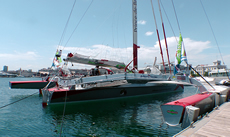 |
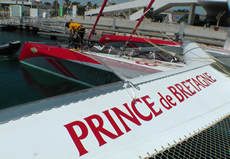 |
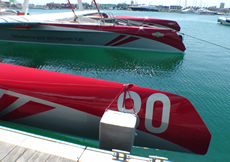 |
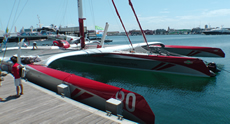 |
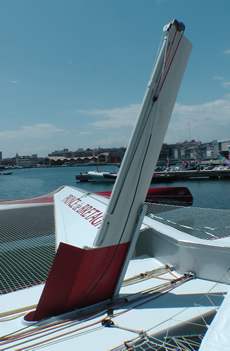 |
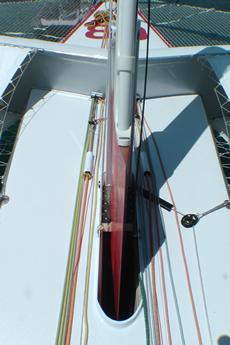 |
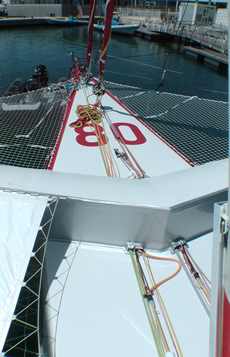 |
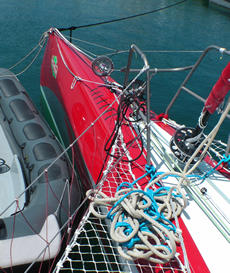 |
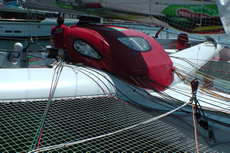 |
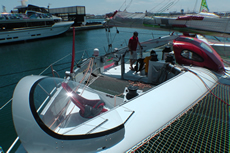 |
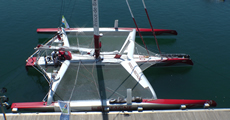 |
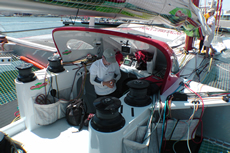 |
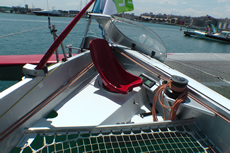 |
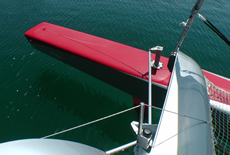 |
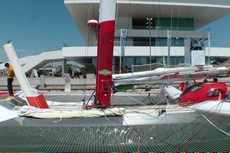 |
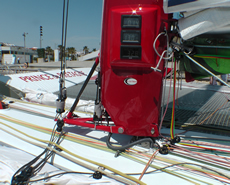 |
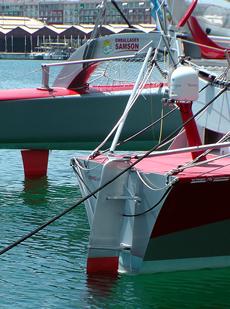 |
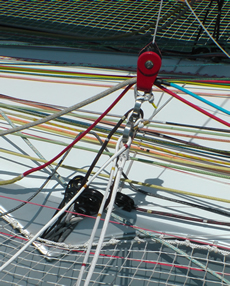 |
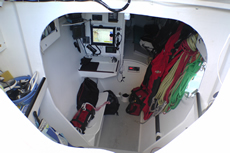 |
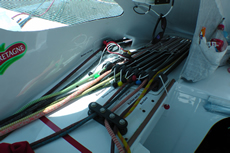 |
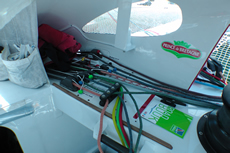 |
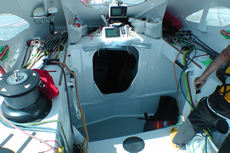 |
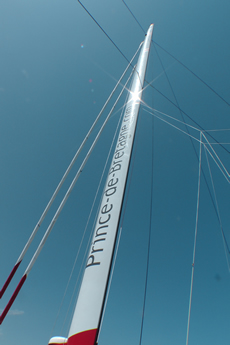 |
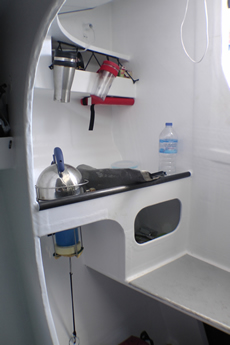 |
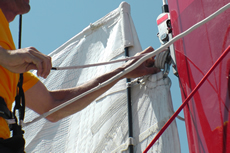 |
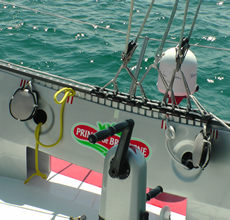 |
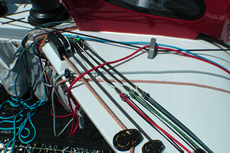 |
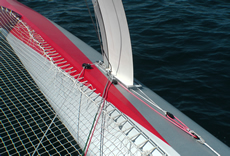 |
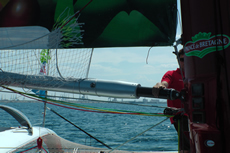 |
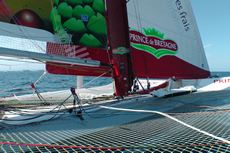 |
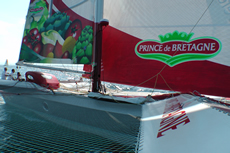 |
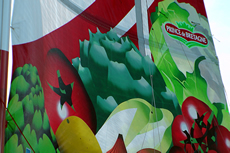 |
 |
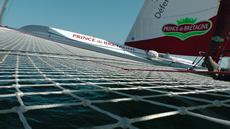 |
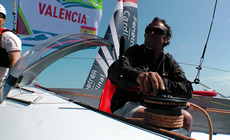 |
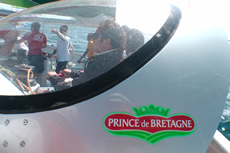 |
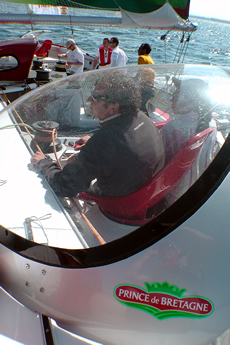 |
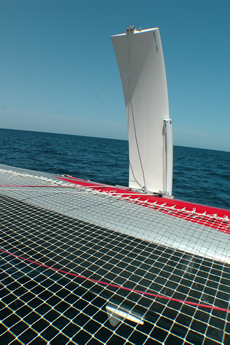 |

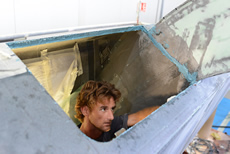
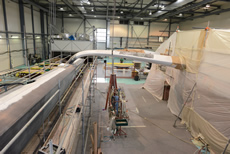












Latest Comments
Add a comment - Members log in